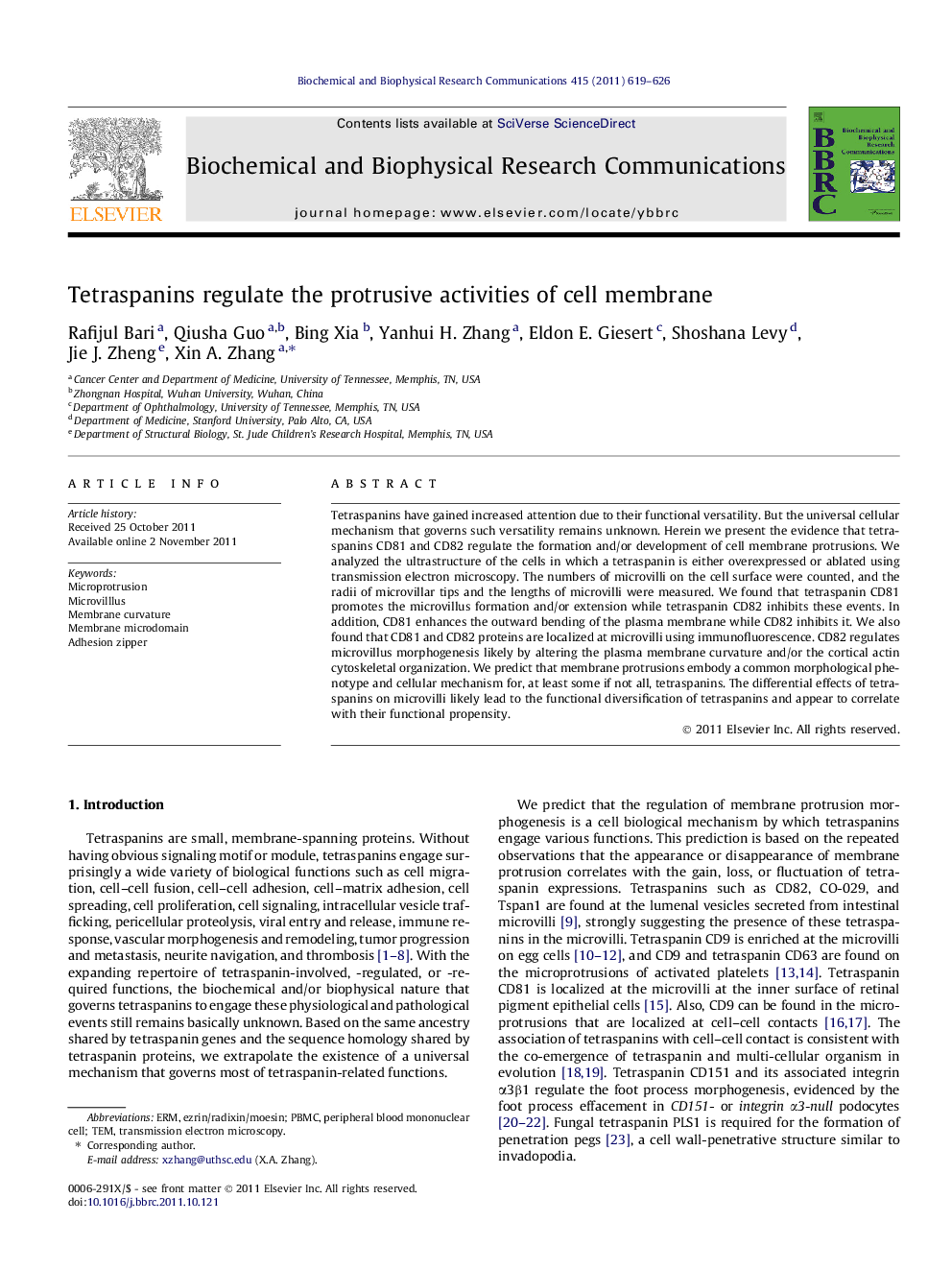| Article ID | Journal | Published Year | Pages | File Type |
|---|---|---|---|---|
| 1930187 | Biochemical and Biophysical Research Communications | 2011 | 8 Pages |
Tetraspanins have gained increased attention due to their functional versatility. But the universal cellular mechanism that governs such versatility remains unknown. Herein we present the evidence that tetraspanins CD81 and CD82 regulate the formation and/or development of cell membrane protrusions. We analyzed the ultrastructure of the cells in which a tetraspanin is either overexpressed or ablated using transmission electron microscopy. The numbers of microvilli on the cell surface were counted, and the radii of microvillar tips and the lengths of microvilli were measured. We found that tetraspanin CD81 promotes the microvillus formation and/or extension while tetraspanin CD82 inhibits these events. In addition, CD81 enhances the outward bending of the plasma membrane while CD82 inhibits it. We also found that CD81 and CD82 proteins are localized at microvilli using immunofluorescence. CD82 regulates microvillus morphogenesis likely by altering the plasma membrane curvature and/or the cortical actin cytoskeletal organization. We predict that membrane protrusions embody a common morphological phenotype and cellular mechanism for, at least some if not all, tetraspanins. The differential effects of tetraspanins on microvilli likely lead to the functional diversification of tetraspanins and appear to correlate with their functional propensity.
► Tetraspanins regulate microvillus formation. ► Tetraspanin CD81 promotes microvillus formation. ► Tetraspanin CD82 inhibits microvillus formation. ► Based on this study, we extrapolated a general cellular mechanism for tetraspanins. ► Tetraspanins engage various functions by regulating membrane protrusion morphogenesis.
